
Rescuing more than 1,200 lost varieties of apples isn’t for the faint of heart. It requires meticulous organization, persistence, and research methods that range from conventional to one-of-a-kind.
That’s where Tom Brown of Clemmons, North Carolina, enters the picture, according to Southern Living. He’s turned pomological curiosity into a burning passion for recovering the lost gastronomical heritage of the Southeastern United States. To do this, he’s leafed through Antebellum-era orchard catalogs, trudged through countless abandoned groves, and driven tens of thousands of miles.
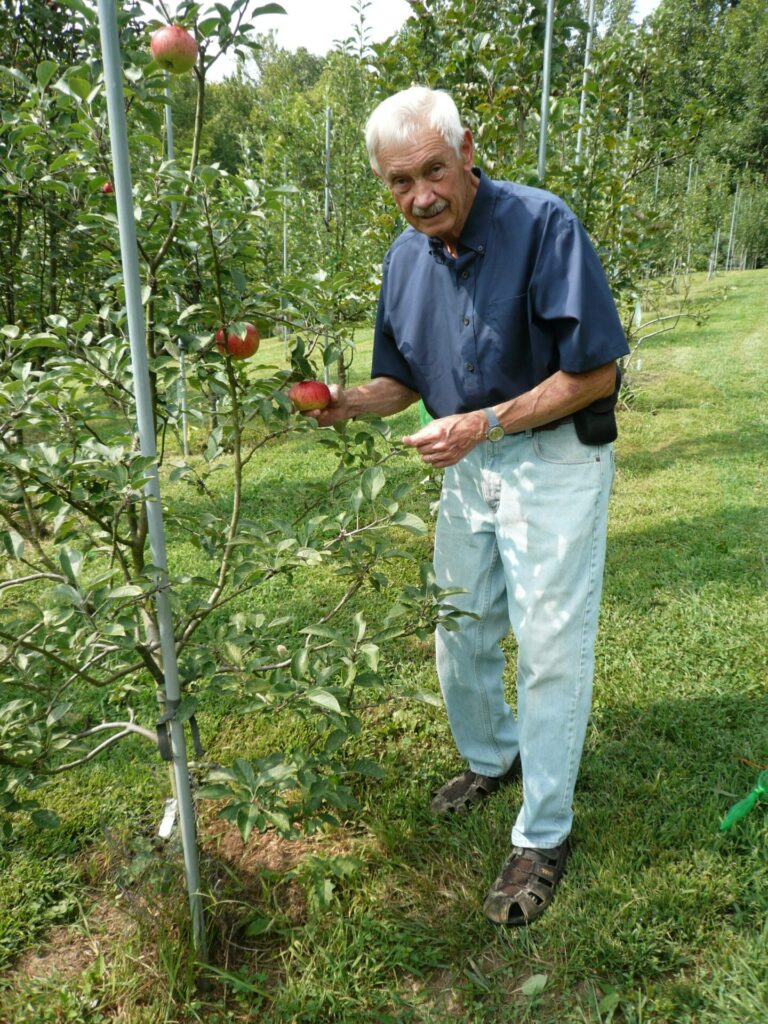
But these sacrifices come with immeasurable dividends each time he discovers an old apple tree. Accompanying the gastronomical adventure is the satisfaction of knowing he’s preserving a vital aspect of American culture. Not to mention the bragging rights of tasting an apple nobody’s eaten for 50 to 100 years!
Keep reading to learn more about his incredible journey to rediscover lost foodways and a unique aspect of American history.
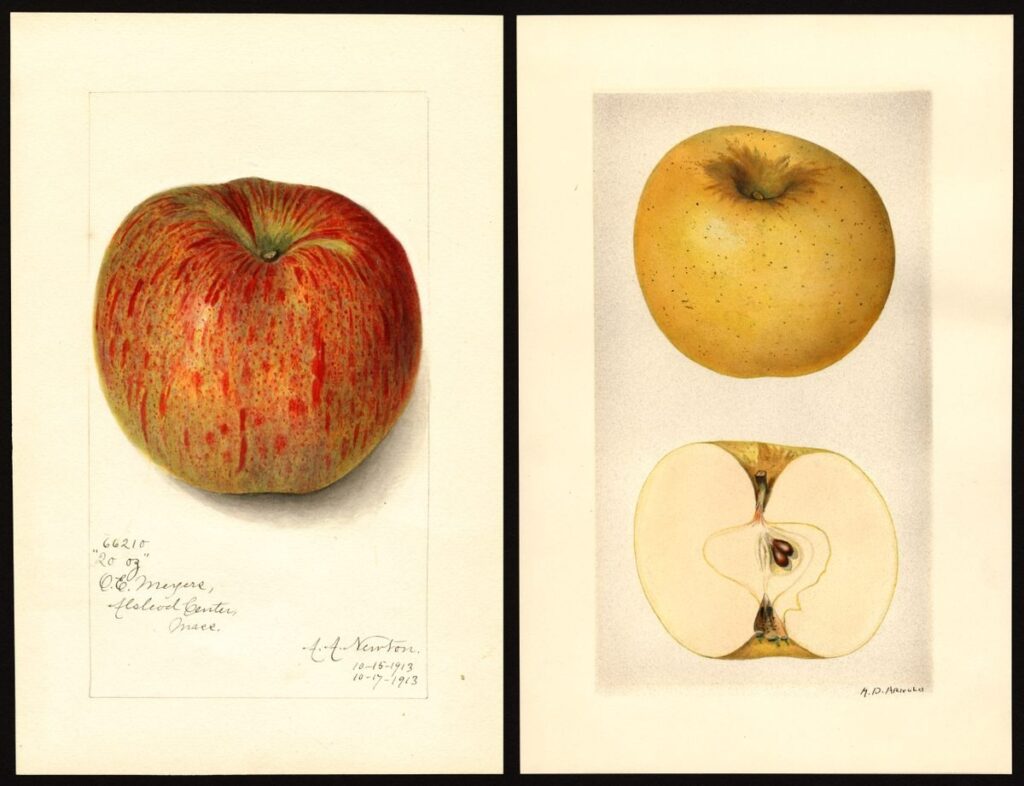
BIRTH OF THE APPALACHIAN APPLE HUNTER
Although it’s understandable to assume Brown has always fostered a love of Appalachian apples, he didn’t dive into this pursuit until 1998. That’s when he stumbled across Maurice Marshall and his impressive collection of apple varieties at a local market. Recalling the strange assortment of fruit on the table, Brown still remembers the size, color, texture, and flavor differences. Their colorful names stood out to him, too.
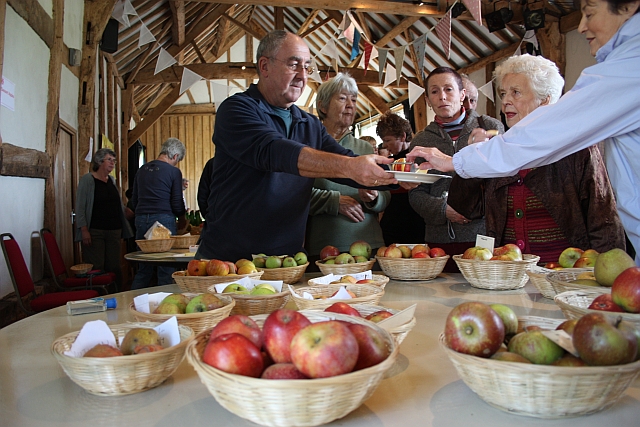
Marshall’s assortment of apples looked like a veritable agricultural patchwork, featuring everything from vibrant shades of sunset pink to bright yellow, yellow-streaked, and purplish black. Fun names like Bitter Buckingham, Arkansas Black, White Winter Jon, and Billy Sparks Sweetening accompanied their colorful variance. He still remembers Marshall’s tasting trays with delight and the incredible textures and flavors he experienced while getting introduced to these long-forgotten fruits.
THE HISTORICAL APPLES THAT AMERICA NEARLY LOST
Brown’s introduction to historical apples left him begging to know more. Marshall’s tasting trays yielded everything from the rosé wine–colored flesh of Jonathans to the honey-like sweetness and pear texture of Rusty Coats. Giant Twenty Ounce apples offered a tart treat with a peachy finish. Grimes Golden contained traces of white pepper and nutmeg, and Etter’s Gold delivered a semi-firm favorite reminiscent of grapes and peony bouquets.
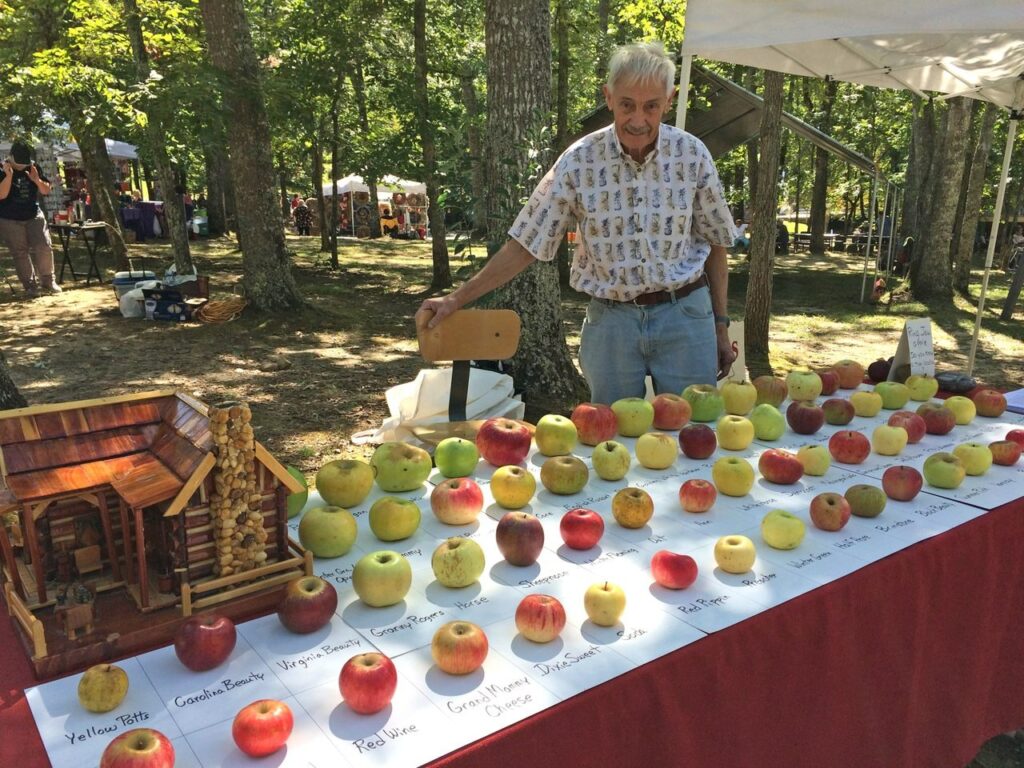
Once the realization hit of how little he knew about the countless apple species that once filled the Appalachians, Brown delved into research. What he found proved both tantalizing and tragic. Once upon a time, apple varieties numbered in the tens of thousands, with orchards growing more than 14,000 unique varieties as late as 1905.
FUNDAMENTAL TO SURVIVAL AND EATING WELL
The great diversity of these apples reflected the practicality of colonial inhabitants. In a time and place where clean and safe water remained rare, it made more sense to drink cider. As a result, apples became the equivalent of Old World wine grapes today, with East Coast farmers indulging in homestead apple orchards of impressive variety.
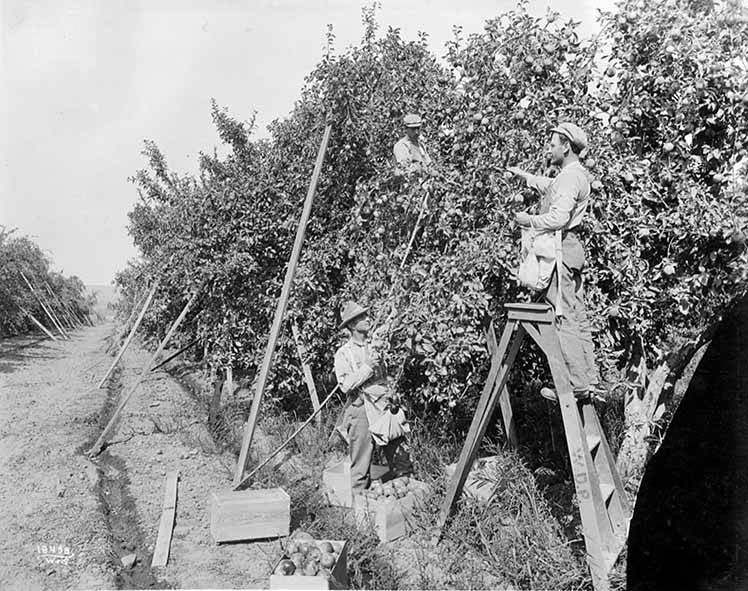
The Appalachian climate lent itself to apple growing, and homesteaders experimented with creating new varieties customized for different functions like cider-making, livestock finishing, and crafting vinegar. As Brown explains, “A diverse orchard was fundamental to survival and good-eating alike” (via Atlas Obscura). Apple orchards occupied a unique place in the American garden as one of its most celebrated achievements, per The Appalachian Voice.
THE DEMISE OF APPALACHIAN APPLES
It’s hard to imagine tens of thousands of varieties of American apples when most grocery stores only carry a handful today. Today’s most popular apple species came to dominate due to two qualities: 1) their rapid development and 2) their ability to remain preserved during long-term storage.

By the 1950s, most small apple orchards were forced out of business. Fast forward a few decades, and you come to the late 1990s. At this point, approximately 11,000 heirloom varieties of apple no longer existed and just 11 types comprised 90 percent of grocery-store sales.
Brown wasn’t one to let more than 250 years of culinary culture and tradition disappear. Instead, he decided to do something about it. Armed with historical seed catalogs, Brown drove thousands of miles, tracking down individuals with old trees in their backyards. He remained driven by the motivation to preserve the past before it was too late. As he notes, “These were foods that people had once cared about deeply, that’d been central to their lives. It felt wrong to just let them die.”
And he’s remained true to his word. More than 1,000 species later, Brown continues to put in the research and legwork to discover new types of apple trees. He’s found most people fascinated by and receptive to his work. The cooperation has led to the rediscovery of many historical apple orchards long-forgotten by descendants of the original orchardists.
What’s more, the excitement of uncovering a fruit people haven’t thought about for decades comes with unique rewards. “Saving an apple from the brink of extinction is a miraculous feeling. It’s incredibly rewarding — and incredibly addictive!”

It a exsalent thing to do as tastes change from genrek growing set by store demand for long self life power skills in the kitchen to make things happen with what you have. Customer complaints. Instead of getting on with it. And blamed sent to the reganel manager how in tern changes serpliers, leaving old none generic serpliers out in the cooled. I hope you understand what I am saying.
How do I get seeds for Rusty Coats apple?
You will need to find an actual Rusty Coat tree and graft buds from LAST year’s growth onto a rootstock. Many county extension offices in central Appalachia offer grafting classes with rootstocks and scionwood ( the new growth collected during dormancy used for grafting) in the early spring. If you live outside that area and don’t mind traveling you could still attend and graft your trees there. You’d need to call and register for the class and it’s a nominal fee. Sullivan county Tennessee offers a grafting workshop each spring. Let them know you are looking for Rusty Coat scion wood and they may have some there for you. I have a Rusty Coat in my orchard but it is old and unlikely to have useable scionwood at its tenure. Good luck.
Sadly, seeds won’t do it.
Apples do not grow “true from seed”.
The only way to propagate an apple is to clone it – take a cutting from the tree and graft it onto new rootstock.
Very interesting & enjoyable subject. Thank you
Fascinating. He is a hero.
In Akron, Ohio my kids uncle and aunt had an apple tree on their land back in the 60’s that was absolutely delicious. The home has been torn down and a new one built so I don’t know if the tree was saved or not. The next time I am in Akron I am going to drive to the new house and see if I can tell what was left of the garden land in the back. Would love to have some seeds out of that apples from that tree.
Pipens are the best!
I had apples recently which had seeds that were sprouting inside. I had never seen that before. Never knew the name of them. I believe they were from a neglected orchard. Wish I had seen this article before.. these were in southwest Missouri.
I enjoyed this very much! I grew up on a defunct orchard in Rhode Island and know no one who saved a “sheep’s snout” aka “Black Republican”- a very dark skinned winter storage apple. It was pretty unique.
Saving any apple does not save that “type ” of apple. Apples grown from seeds do not reproduce the same type as the original apple the seeds came from. The only way to get the same apple is to pick it from a graft from the original tree. Every McIntosh apple comes from a graft traced back to the original tree Mr. McIntosh discovered. Saving the apples and their seeds does NOT save the type; but every seed will give a new type of apple. Try it.
I am 75 years old and the best apples I have ever eaten were from the old fashioned Snow apple tree on my Grandfather’s farm. When I was in my twenties, my husband and I went back to look for the tree but it had fallen over and there was very little left alive. Also remember Harvest apples that we kids liked to eat when still slightly green.
I have some seeds from an apple tree up north in Michigan, out in the boonies. I’ve had them frozen. Do you want them?